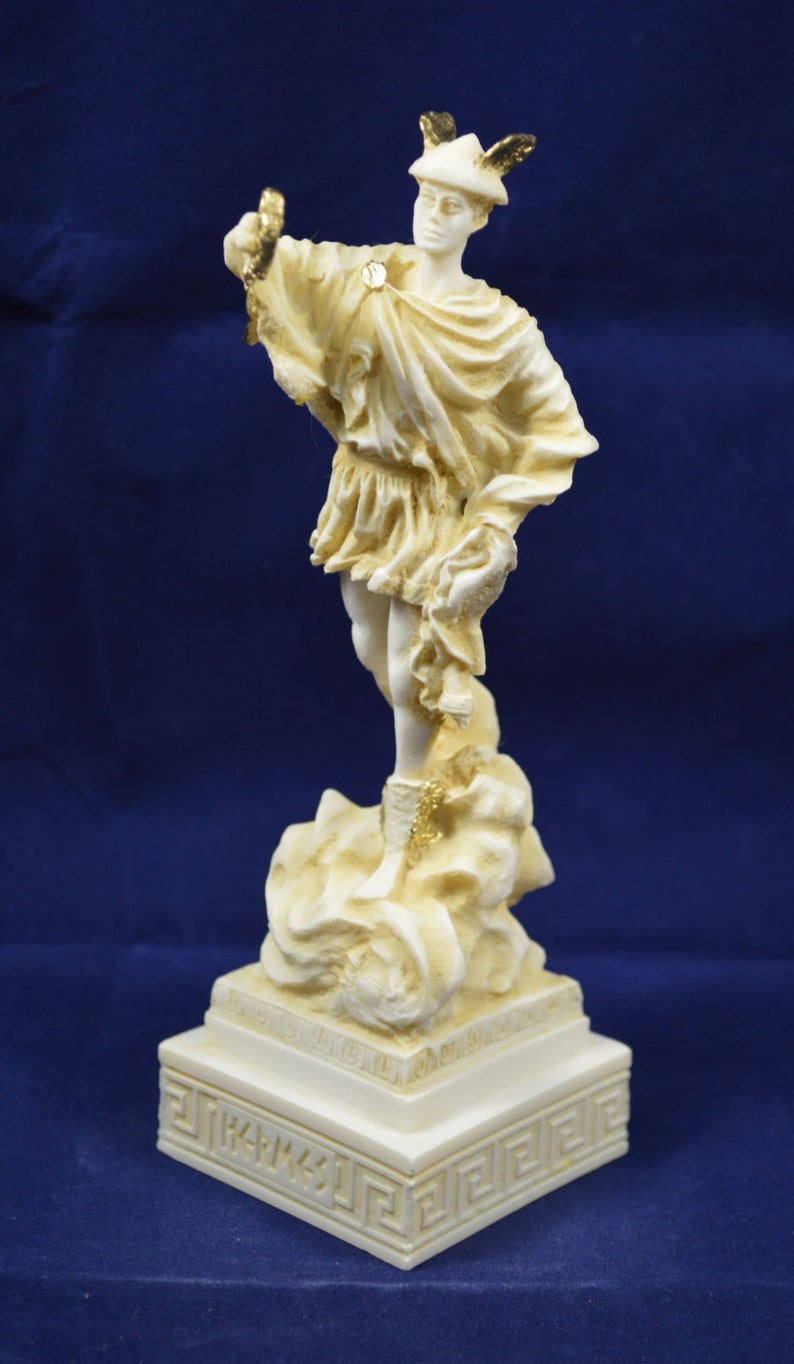

Once an object of adulation, the bust was eventually consigned to a sewage duct.
#Hermes greek god trial#
Perhaps most importantly, Hermes served as the protector of travelers and merchants-a fact that made him popular in a society where robbers and pirates ran rampant.ĭestroying herms was considered extremely sacrilegious in 415 B.C., after a number of protective pillars across Athens were mutilated overnight, an investigation resulted in the trial and indictment of multiple suspected vandals.Īs Nick Squires reports for the Telegraph, the newly discovered herm was buried three feet beneath the surface of Agia Irini, or St. Some revered him as the god of fertility, while others knew him as the messenger of the gods, embodied by a spritely young man with wings.

Like other gods and goddesses, Hermes fulfilled multiple roles. The etymology of his name most likely stems from the word herma, which roughly translates to “a heap of stones.” In Greece, such stones were often used to indicate boundaries or landmark, acting as both cult objects and location markers, notes Encyclopedia Britannica. Hermes, the son of Zeus and the nymph Maia, was one of the 12 Olympian gods. According to the Hermitage, worshippers placed the images at crossroads and gates in hopes of invoking Hermes’ protection. Known as herms, these works consisted of a square pillar topped with a bust of Hermes and an erect phallus (“carved in relief or in-the-round,” writes Carolyn Swan for the Bryn Mawr Classical Review). Per the AP, the millennia-old bust was “one of many” statues used as street markers in ancient Athens. His head of Hermes Propylaeus, which once stood at the entrance of the Acropolis of Athens, inspired an array of later copies, including works housed at the Getty Center, the State Hermitage Museum and the Metropolitan Museum of Art. Following its excavation, the likeness was transferred to the Athens Ephorate of Antiquities, an agency of the Ministry of Culture.Īs Valentina Di Liscia notes for Hyperallergic, the sculpture is in the style of Alcamenes, a Greek sculptor active during the second half of the fifth century B.C.

In a departure from traditional depictions of Hermes as a youthful man, the newly discovered bust portrays the god at “a mature age,” according to the statement. The statue-found in the wall of a drainage duct-is in good condition and appears to date to around 300 B.C., the Associated Press reports. Per a statement, routine sewage work in Athens unearthed a buried bust of the Greek god Hermes on Friday, November 13. Last weekend, the Greek Culture Ministry announced the chance discovery of one such artifact. But every so often, an unwitting individual stumbles upon a long-forgotten remnant of one of these ancient artworks, opening up a window into the distant past. The majority of these sculptures disappeared over the intervening centuries, falling victim to vandals, medieval lime-kilns and other ravages of time. Even though he had no wife Hermes did have alot of children.In ancient Greece, lifelike-and, in some cases, larger-than-life-statues of gods and goddesses towered over temples, inspiring acolytes to seek blessings and present offerings. He was also a very naughty god as a little boy and disobeyed his mother all the time. Another time he disguised himself as a Cyclops and scared the poor Oceanides. When he was first born he ran of and stole the cattle of Apollo. He also had a special soft spot for runners and would always look out for athletes who got hurt and needed help.īeing the second youngest god, Hermes was kind of a prankster and pulled lots of jokes and tricks on the gods. He also made up many of the racing sports as well as boxing and wrestling. among the things he invented was fire and the lyre. Hermes was a very handy and creative kind of god. His sacred animals are the tortoise, the ram, and the hawk. His attributes include the herald's wand or caduceus, winged sandals, and a traveler's cap. Hermes was also the guide to the dead souls down to the underworld. The god of travel, messengers, trade, thievery, cunning wiles, language, writing, diplomacy, athletics, and animal herders and shepards.


 0 kommentar(er)
0 kommentar(er)
